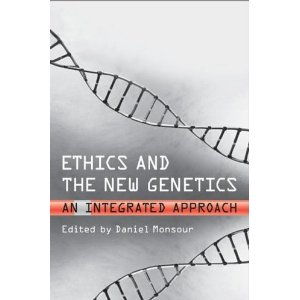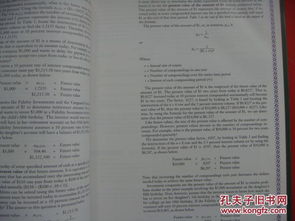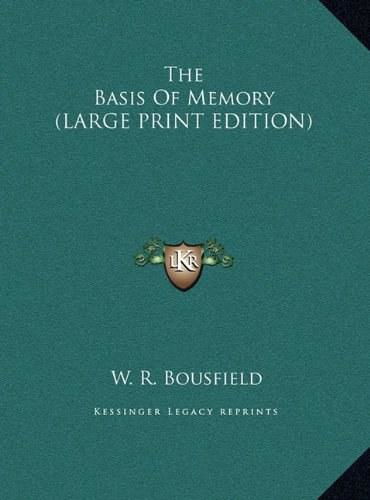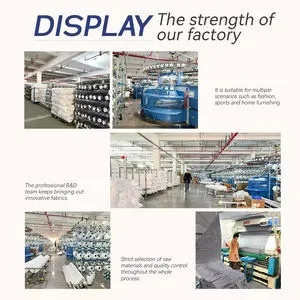An Integrated Approach to Textile Design Education
In the realm of textile design education, an integrated approach is crucial for cultivating innovative and well-rounded designers. This method integrates traditional craftsmanship with contemporary technology, fostering a synergy between the tactile and visual aspects of textile design. By integrating these elements, educators can provide students with a comprehensive understanding of the creative process, from conceptualization to final product creation. This approach not only enhances student engagement but also prepares them for the dynamic and ever-evolving world of textile design.
Introduction: In the ever-evolving world of fashion and textiles, innovative design is at the heart of creating products that resonate with consumers. As a designer, it's crucial to understand the fundamental principles of textile design, as well as how to apply them creatively in the context of a practical project. This tutorial aims to provide an immersive experience for students, enabling them to develop their skills in both theory and practice through hands-on learning.
Textile Design Basics: Textile design encompasses a broad range of techniques, from pattern making to color coordination, and involves understanding the properties of different materials, such as cotton, silk, and wool. The foundational course will cover the basic concepts of textile design, including the importance of balance, proportion, and aesthetics in creating visually appealing designs.
Course Outline: Week 1: Foundations of Textile Design

- Introduction to textile design terminology
- Understanding the four main textile families (clothing, home textiles, industrial, and fashion)
- Introduction to textile materials and their characteristics
- Pattern making techniques (block printing, embroidery, etc.)
Week 2: Color Theory and Coordination
- Introduction to color theory and its application in textile design
- Understanding color mixing and how it affects perception
- Techniques for color coordination (color wheel, complementary colors, etc.)
Week 3: Pattern Making and Cutting Techniques
- Introduction to traditional and modern pattern making methods
- Cutting techniques for various textile materials
- Introduction to digital fabrication tools like CAD software
Week 4: Integration of Technology in Textile Design
- Exploring the use of technology in textile design, including 3D modeling, virtual reality, and augmented reality
- Case studies on successful textile projects using technology
Week 5: Case Studies and Project Work
- Analysis of real-world textile design projects
- Group assignments where students will work collaboratively on a project
- Presentations on their chosen project
Week 6: Final Project and Reflective Learning
- Final project assignments, which could include designing a new textile product or revamping an existing one
- Reflective discussions on the learning process and personal growth
Case Study: A Successful Textile Design Project To illustrate the practical application of the curriculum, let's consider the case study of "The Future of Fashion," a project by a student team at the University of Art London. The team focused on sustainability and eco-friendliness in their design, using organic cotton and recycled materials. They employed a combination of traditional and digital techniques to create a collection of clothing pieces that not only looked good but were also environmentally conscious. Their project was recognized at the university's annual design competition, showcasing the power of combining creativity with sustainability.
Conclusion: By completing this comprehensive textile design education program, students will have gained a solid foundation in the fundamentals of textile design, as well as practical skills in pattern making, cutting techniques, and the integration of technology. With each week's progression, they will be able to apply these skills to real-world projects, ultimately becoming designers who can create textile products that not only look great but also contribute positively to the environment.
随着纺织行业的快速发展,纺织品设计教学的重要性日益凸显,本教学方案旨在为学生提供全面、系统、实用的纺织品设计知识,培养具备创新能力和实践能力的纺织品设计人才,本方案将结合理论与实践,注重学生实际操作能力的培养,同时引入案例分析,以提升教学效果。
教学目标
-
掌握纺织品设计的基本理论和方法。
-
了解纺织品市场的趋势和需求。
-
掌握纺织品设计的实践操作技能。

-
培养学生的创新思维和设计能力。 与方法
-
理论教学
(1)介绍纺织品设计的基本概念和原则。 (2)讲解纺织品市场的现状和发展趋势。 (3)介绍纺织品设计的流程和方法。 (4)引入案例分析,让学生了解实际设计案例的流程和要点。
实践教学
(1)组织学生进行纺织品设计实践操作,包括绘制草图、制作样品、进行样品测试等。 (2)邀请行业专家进行讲座,分享行业经验和技巧。 (3)引入校企合作项目,让学生参与实际项目的设计和制作。 (4)采用多媒体教学、案例分析等多种教学方法,提高教学效果。
案例说明
某品牌纺织品设计项目
该品牌在市场上具有一定的知名度和影响力,其纺织品设计注重时尚、舒适、环保等元素,在案例中,我们将介绍该品牌的设计理念、设计流程和具体设计实例,介绍该品牌的设计理念,强调环保、舒适、时尚等元素的重要性;讲解设计流程,包括市场调研、设计方案制定、样品制作和测试等环节;展示具体的设计实例,让学生了解实际设计过程和要点。
教学安排与时间表
- 第一周:介绍纺织品设计的基本概念和原则,讲解市场现状和发展趋势,安排学生进行实践操作练习。
- 第二至第四周:进行实践教学,包括组织学生参与实际项目的设计和制作,邀请行业专家进行讲座,引入校企合作项目,同时采用多媒体教学、案例分析等多种教学方法,提高教学效果。
- 第五周:进行期末考试和总结,布置期末作业。
评估与反馈
- 评估方式:采用平时作业、实践操作练习、期末考试等多种方式进行评估,同时邀请学生参与课程反馈调查,了解学生对课程内容和教学方法的看法和建议。
- 反馈机制:建立学生信息反馈平台,及时收集学生意见和建议,对教学方案进行改进和完善,同时定期组织学生进行交流和讨论,分享学习心得和经验。
本教学方案注重理论与实践相结合,注重学生实际操作能力的培养,通过理论教学和实践教学相结合的方式,让学生掌握纺织品设计的基本理论和方法,了解纺织品市场的趋势和需求,掌握纺织品设计的实践操作技能,同时引入案例分析,让学生了解实际设计案例的流程和要点,通过合理的教学安排与时间表,以及有效的评估与反馈机制,可以有效地提高教学质量和效果。
Articles related to the knowledge points of this article:
The Fabric of Success:Navigating the World of Nantong Anton Textiles
The Fabric of Success:A Case Study on Fujian Tianyuan Textiles
The Fabric of Innovation:A Look at Wenzhou Huanhong Textiles



